What is caffeic acid? How is the coffee sour? Is it because of the coffee acid?
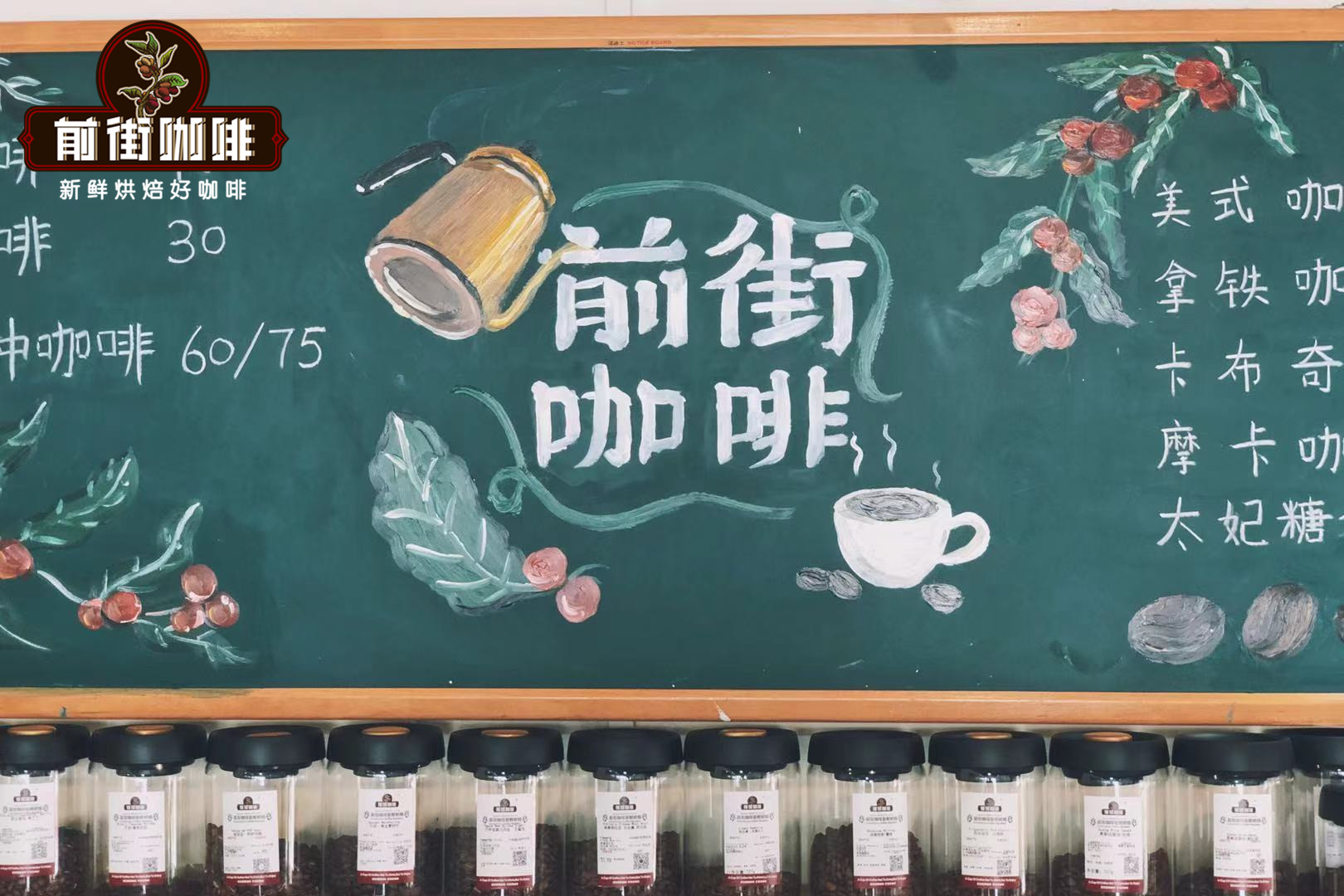
Professional coffee knowledge exchange more coffee bean information please follow the coffee workshop (Wechat official account cafe_style)
Friends who have just come into contact with coffee generally think that coffee tastes mellow and bitter, so when drinking coffee made by hand with shallow roasted coffee beans, they will think that the coffee has gone bad, and why is it sour? As a matter of fact, coffee itself is sour. After all, coffee itself is a kind of fruit. You should know that fruits are sour, but there is also a bad acid in coffee flavor. So where does the acidity of popular science coffee come from in the next article?
Where does the sour taste in coffee come from?
The sour taste of coffee comes from its own fruit acid in the first place, but the content of caffeic acid in the brewed coffee liquid is very low, only 0.03 mg / 100 ml.
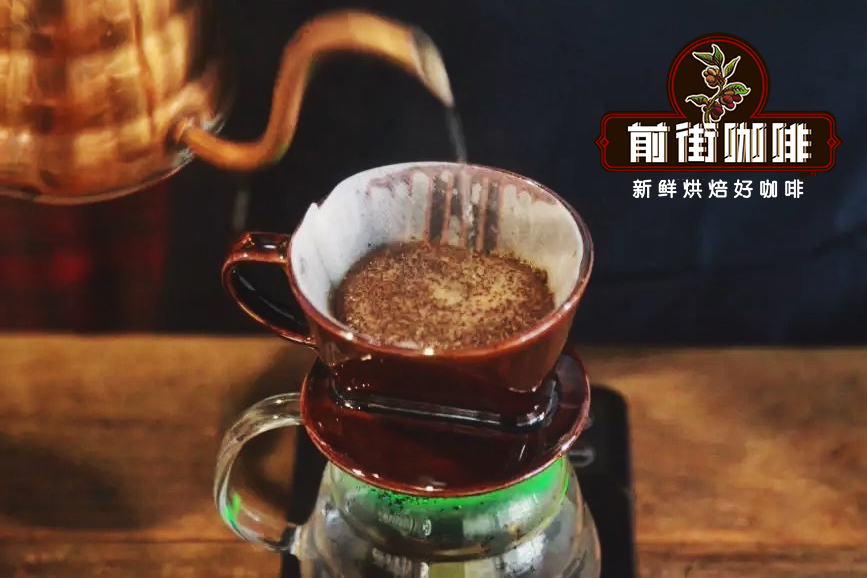
Caffeic acid is also found in many crops, especially thyme, sage and magnolia, which are high in caffeic acid (about 20mg/100g). And according to Qianjie Coffee, there is a certain amount of caffeic acid (about 1.88mg/100ml) in red wine, followed by applesauce, apricots and plums also contain caffeic acid (1mg/100g). So it's normal for coffee to have a sour flavor.
Secondly, according to Qianjie coffee, it is understood that the degree of roasting will also affect its acidity, so it will be classified as shallow and deep roasting of coffee beans in the coffee flavor wheel.
What is the coffee flavor wheel?
So what is the coffee flavor wheel? In fact, it is a picture that can most directly reflect the flavor of coffee, so Qianjie Coffee thinks that the quickest way to understand the flavor of coffee is to understand the "coffee flavor wheel", which is the most intuitive guide to the flavor of popular science coffee (pictured below).
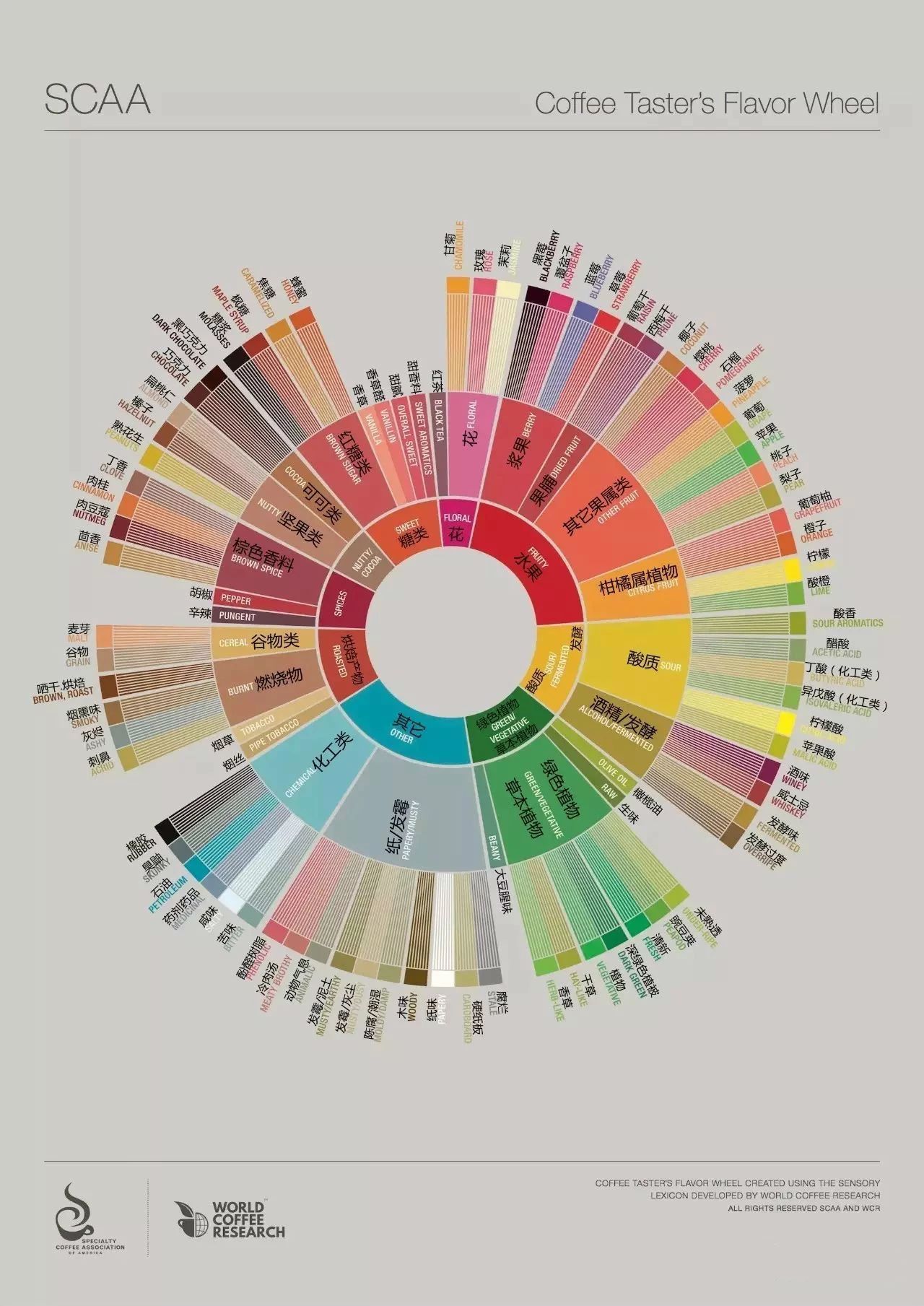
Because when it comes to coffee flavor, coffee fans all know that the taste sensory system can taste the sweet, sour, bitter and spicy taste, while in the coffee tasting, it mainly focuses on the performance of the four major tastes of sour, sweet, bitter and salty coffee. The coffee flavor wheel is classified by the shallow and deep roasting of coffee beans, so what is the relationship between the acidity in coffee and the degree of roasting?
Relationship between caffeic acid and roasting degree of coffee
Secondly, Qianjie Coffee believes that citric acid, malic acid, quinic acid and phosphoric acid are equal to sour ingredients in raw coffee beans, but these are not the sources of sour taste felt when drinking coffee. The acid caused by baking is the main source of sour taste.
Because as soon as raw beans are baked, chemical reactions occur in various ingredients, creating new acids. The most representative is the reaction of quinic acid after chlorogenic acid decomposition and the volatile formic acid and acetic acid reaction after oligosaccharide decomposition.
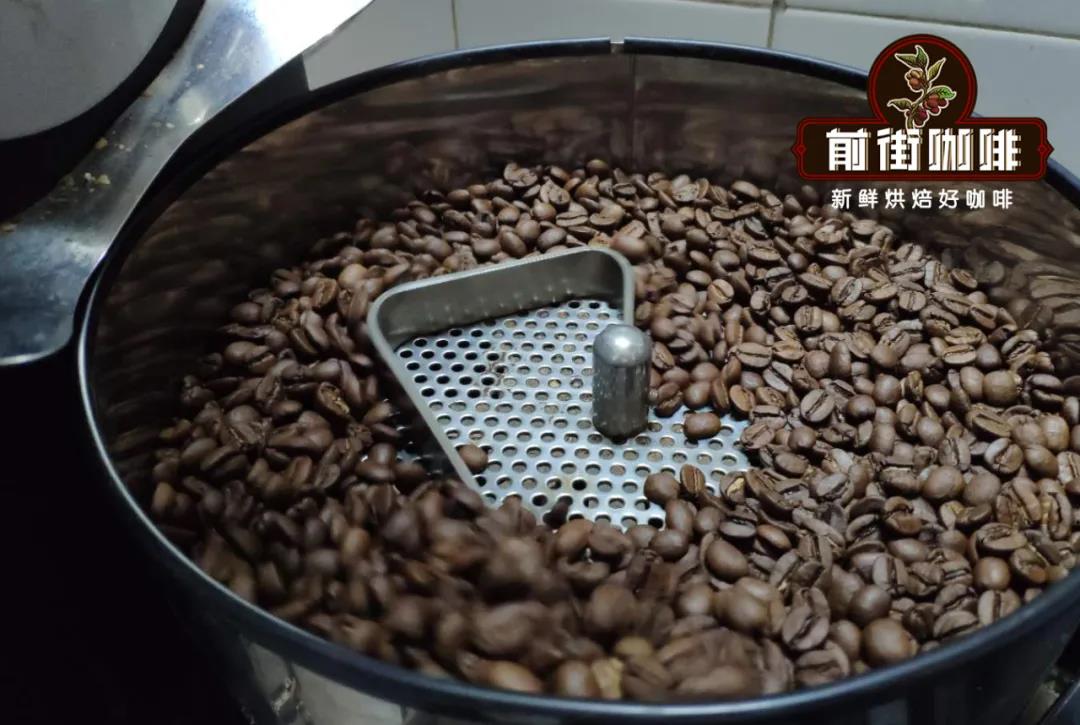
For example, the coffee flavor wheel mentioned above in Qianjie Coffee divides the coffee flavor according to the roasting degree of raw coffee beans, because according to scientific research, it has been found that the "sweet and sour" flavor of shallow roasted coffee beans has low molecular weight, high polarity and high water solubility. it is often dissolved in the first half of extraction. However, the "bitter and salty" flavor, with high molecular weight, low polarity and low water solubility, is often dissolved in the second half of extraction.
So the taste of medium roasting coffee is mainly low molecular weight and medium molecular weight sour and sweet taste, but there are too many defective beans or improper baking, even shallow baking will appear thankless bitter and salty taste. So that deep baking is dominated by high molecular weight bitterness and saltiness.
But deep roasting is not useless. For example, Indonesia Mantenin in the front street coffee shop is the king of medium and deep roasted coffee beans, showing a rich, mellow flavor and a balance of sweet and sour.
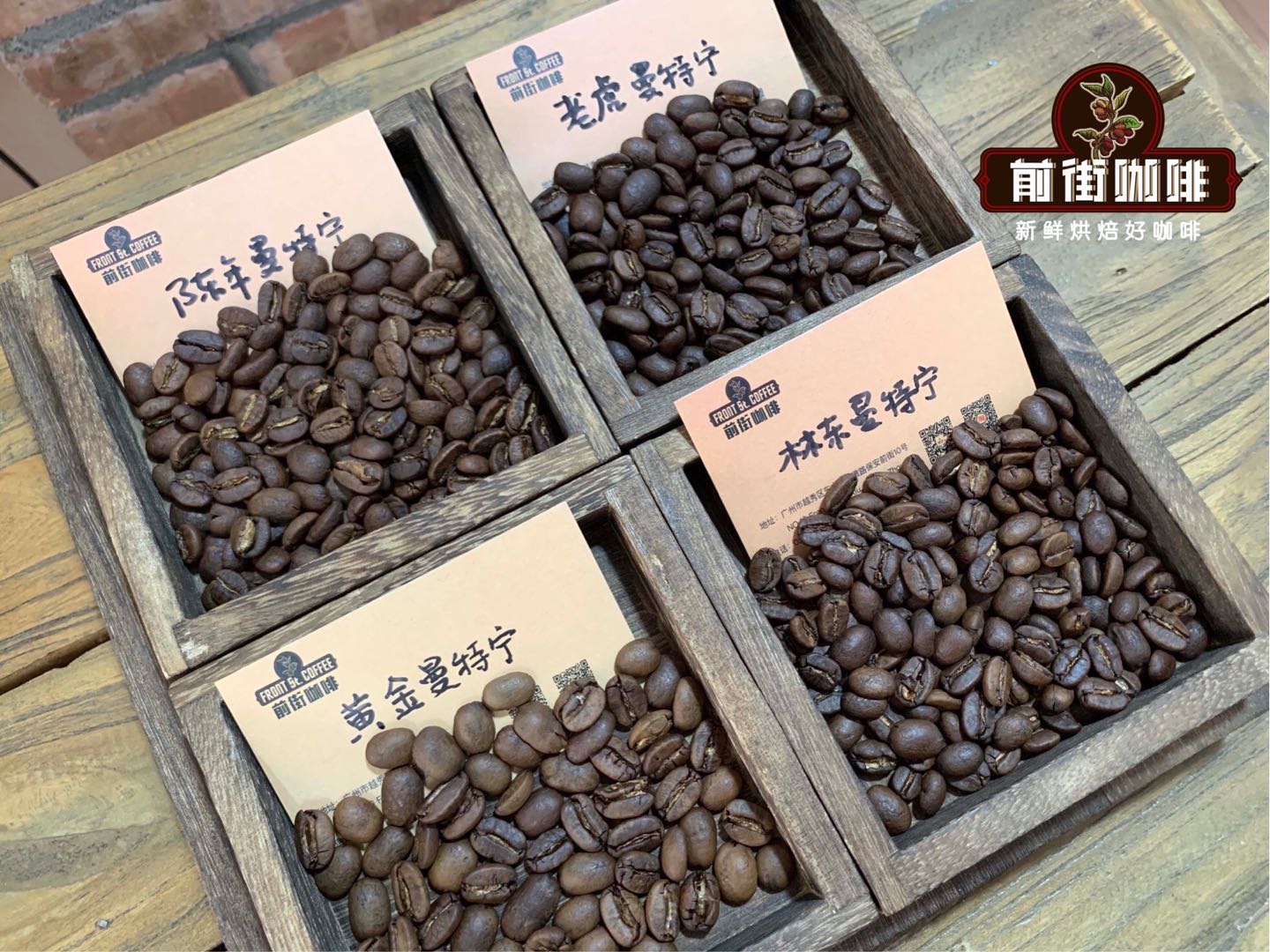
So sour taste is the biggest feature of shallow roasted coffee beans, coffee beans contain a variety of organic acids, including phenolic acids, fatty acids and amino acids, which have the greatest impact on the taste of coffee. Among them, the bright citrus citric acid presented by the shallow roasted Yekachefi coffee beans in the front street coffee shop is very popular with coffee fans all over the world, and it is also one of the representatives of high-quality boutique coffee.
In addition, in the process of baking, sucrose degrades the product, from light baking to medium baking, sucrose will gradually degrade, and the concentration of acetic acid and lactic acid will increase, but at a certain point, it will drop dramatically, so the sour taste of coffee baked in light will be more obvious.
How to distinguish between good acid and bad acid in coffee?
Secondly, acids also have pleasant acids and uncomfortable acids. For example, fruit acids in lemons and oranges show "bright, lively, moderately acidic fruit acids", while some low-quality concentrated juices have "sharp sour taste and over-fermented acid", which is a bad acid, which is also distinguished in the coffee flavor.
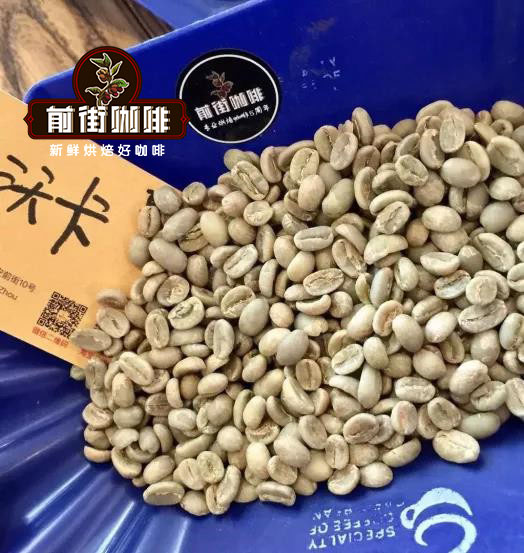
Esseyega Shifeiwaka coffee bean flavor is citrus citric acid.
On the other hand, Qianjie Coffee also learned that many coffee rookies who have just come into contact with single coffee will confuse acidity with astringency in coffee, but in fact, there is an essential difference between sour and astringency. Acid is regarded as acidity when there is a sensation of raw saliva on both sides of the middle and back of the tongue after drinking coffee, while astringency is caused by spicy and noisy sensations on the surface of the tongue, throat and upper jaw after drinking coffee. It's like drinking a cup of coffee with gauze strips.
Therefore, astringency is a bad flavor in coffee flavor, which reflects the defective results from raw beans to roasting and even production, because a good cup of coffee should not be bitter.
In addition, sour taste is one of the terms used to describe coffee flavor. in general, the acidity of coffee is not only affected by the planting conditions of coffee itself, but also related to the treatment of coffee in the later stage. including coffee roasting degree, coffee brewing time, coffee grinding, and preservation time and so on.
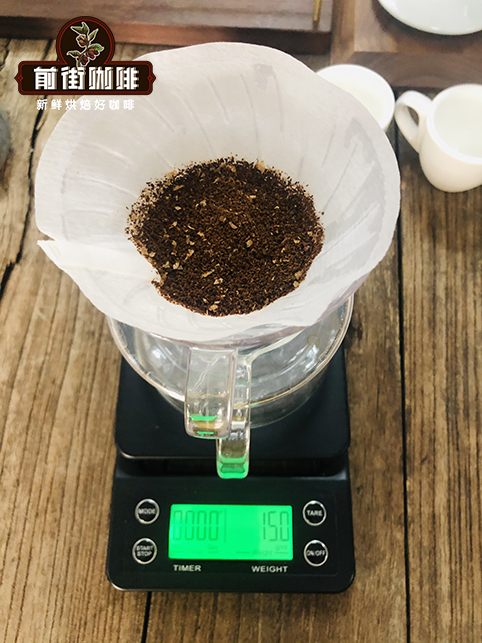
What circumstances usually lead to the astringency of brewed coffee?
First of all, to eliminate the impact of defective beans on brewing quality, Qianjie coffee also encountered sour and bitter when it first came into contact with hand-made coffee. The main reasons are:
1. The water temperature is on the high side (or there is a heat source to heat the water temperature continuously)
2. The water temperature is too low (or the hot water loses temperature too fast)
3. The current is too full (or too fast)
4. the grinding degree of coffee powder is too fine (or too much ultra-fine powder).
5. The grinding degree of coffee powder is too rough.
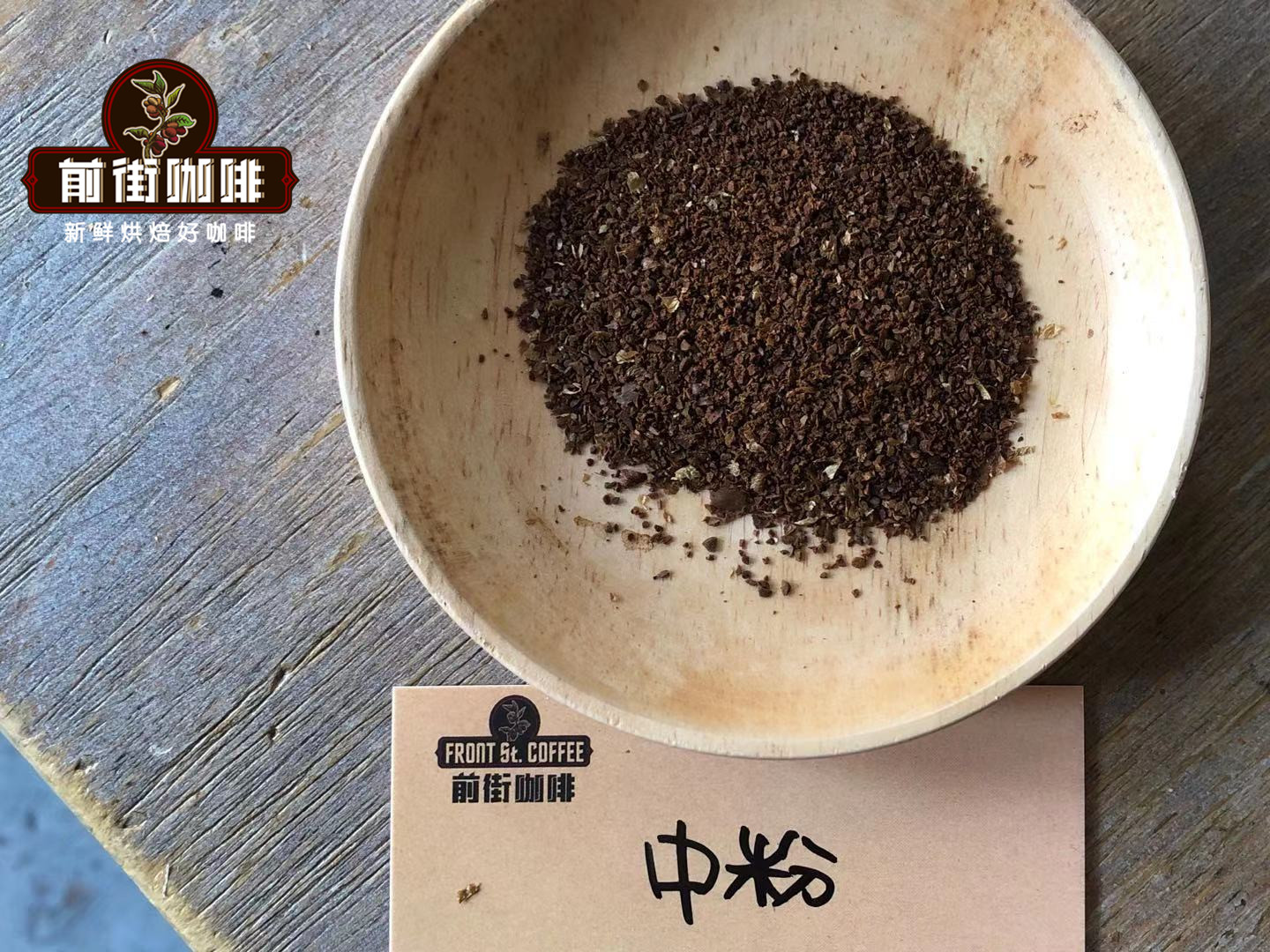
These factors will either cause the extraction rate of coffee to be improved, so that too many dissolved substances will be extracted, which will contain good and bad flavors, which are generally shown as bitter taste, or will cause the extraction rate of coffee to be too low. the extracted flavor substances are too few and out of balance, and the astringent taste is magnified and prominent, generally showing as sour taste, that is, the bad sour taste that coffee Xiaobai first came into contact with.
How should coffee be adjusted if it is too sour or too heavy?
1. Grinding degree
Coffee grinding thickness is closely related to the sour taste of coffee. Finer ground coffee has lower acidity. If coffee is ground thicker, coffee is more sour.
two。 Brewing time
The brewing time is the key factor affecting the extraction degree of coffee. The longer the brewing time, the higher the extraction degree of coffee. Even if the degree of grinding is rough and the brewing time is too long, the coffee will have no sour taste; vice versa.
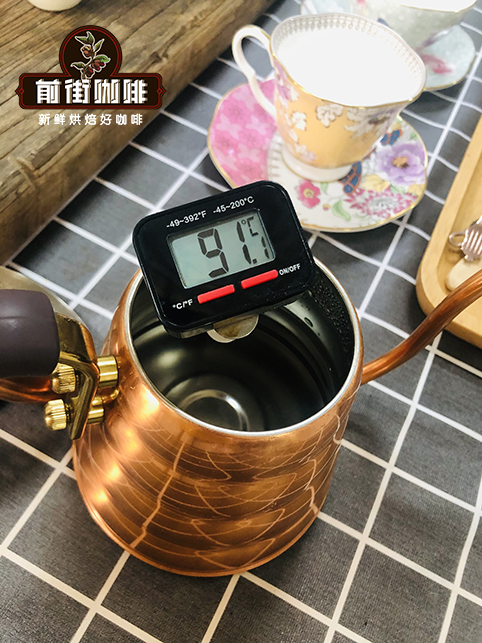
3. Water temperature
Just as the acidity of cold-extracted coffee is very low, in general, the higher the water temperature, the faster the coffee extraction rate; the lower the water temperature, the slower the rate.
So the sour taste in coffee is actually one of the characteristics of lightly roasted boutique coffee, and if there is no acid in the coffee flavor, then this cup of coffee is soulless, because a good cup of coffee needs a balance of sweet, sour and bitter. For example, the Jamaican Blue Mountain Coffee beans in the Qianjie Coffee Shop and the Indonesian pwn Gold Mantenin Coffee beans are famous for their balanced sweet and sour flavors.
No matter what the coffee bean flavor is, is it sour?
Coffee fans who often drink hand-brewed coffee know that coffee flavors are mainly divided into three categories, which are distinguished by the three largest coffee producing areas in the world. When it comes to the sour coffee beans in Africa, the coffee beans in Asia are famous for their herbal and spice flavor, while the Latin American coffee bean flavor is a combination of the first two with nutty and cocoa flavor, which is mainly famous for its balanced flavor.
As mentioned above in Qianjie Coffee, as long as all crops contain caffeic acid, the flavor of coffee beans must also be sour, but in each producing area, the variety of coffee is drunk because of the climate, and the coffee flavor will be affected by the different methods of coffee treatment. acid and non-acid are only defined between really sour and not so sour. It is as if the coffee beans of Ethiopia in Africa show citrus citric acid, while the coffee beans in Latin America show strawberry acid. If anyone is sour than the other, it must be citric acid.
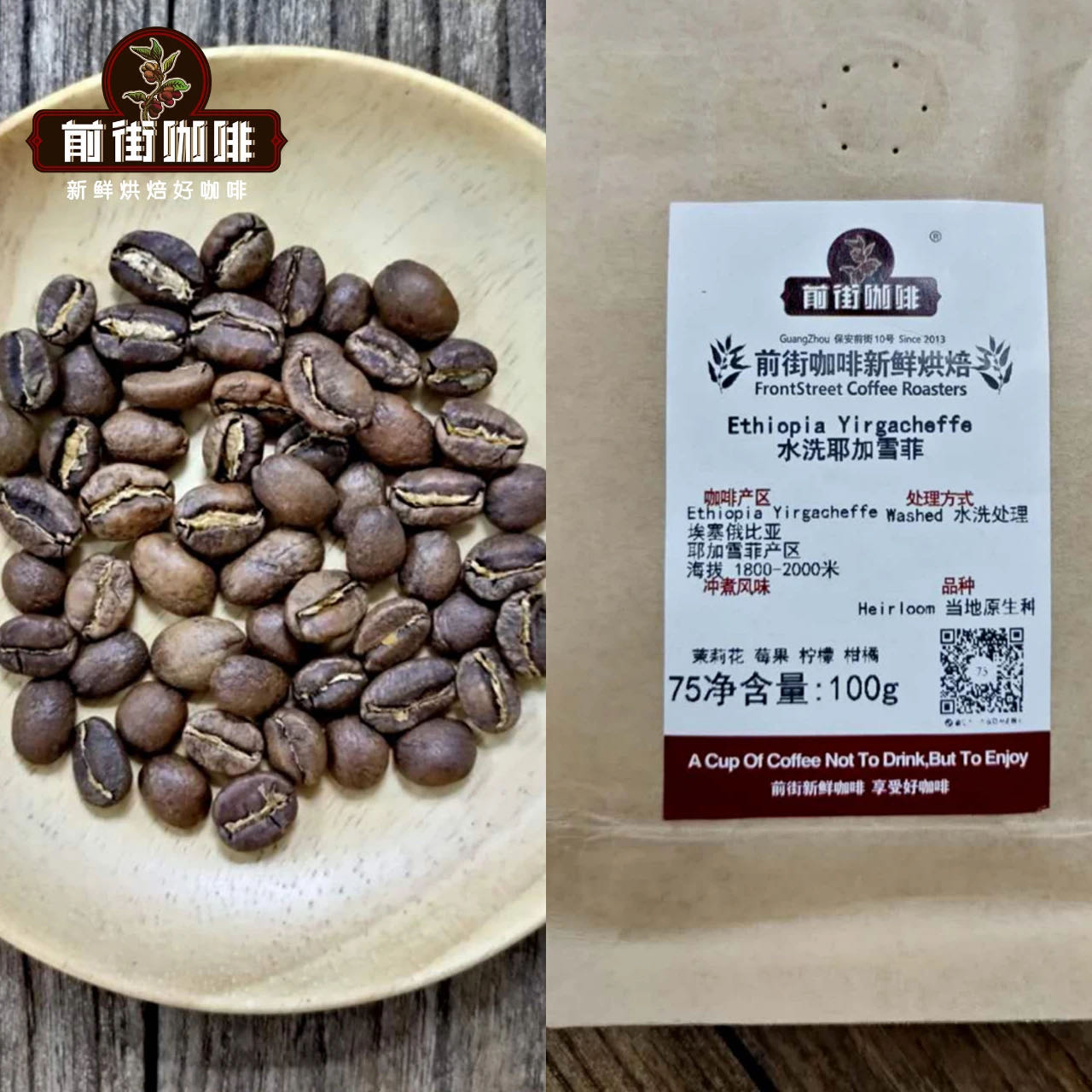
The above is the relevant information compiled by Qianjie Coffee about coffee acid and where the acid in coffee comes from, hoping to help coffee fans know more about coffee so that they can choose coffee beans that suit their taste in the future. as Qianjie Coffee said, coffee fans who like sour flavor can choose coffee beans from Ethiopia in Africa, while those who like mellow and bitter can choose coffee beans from Asia. Like more sweet and sour more balanced and with nuts, cocoa flavor can choose Latin American coffee beans.
For more boutique coffee beans, please add private Qianjie coffee on Wechat. WeChat account: kaixinguoguo0925
Important Notice :
前街咖啡 FrontStreet Coffee has moved to new addredd:
FrontStreet Coffee Address: 315,Donghua East Road,GuangZhou
Tel:020 38364473
- Prev
Why does the coffee turn sour? Why is the coffee sour? The relationship between sour coffee and cream
Professional coffee knowledge exchange more coffee bean information please follow the coffee workshop (Wechat official account cafe_style) Coffee sour source pleasant acid and annoying acid difference between my family to buy a can of ground granular coffee used to drink very smooth very fragrant everything recently soaked has a sour taste, at first I thought it was cream expired, and then did not add up to drink the same, in the end why
- Next

[answer] Coffee acid is better or bitter.-No bitterness is a good cup of coffee.
Professional coffee knowledge exchange more coffee bean information Please follow the coffee workshop (Wechat official account cafe_style) the source of sour coffee the difference between pleasant acidity and annoying acidity is also coffee, why is the price difference between cheap coffee sold in convenience stores and coffee provided by professional cafes two or three times? In fact, the depth and level of taste and aroma of good coffee
Related
- Beginners will see the "Coffee pull flower" guide!
- What is the difference between ice blog purified milk and ordinary milk coffee?
- Why is the Philippines the largest producer of crops in Liberia?
- For coffee extraction, should the fine powder be retained?
- How does extracted espresso fill pressed powder? How much strength does it take to press the powder?
- How to make jasmine cold extract coffee? Is the jasmine + latte good?
- Will this little toy really make the coffee taste better? How does Lily Drip affect coffee extraction?
- Will the action of slapping the filter cup also affect coffee extraction?
- What's the difference between powder-to-water ratio and powder-to-liquid ratio?
- What is the Ethiopian local species? What does it have to do with Heirloom native species?

